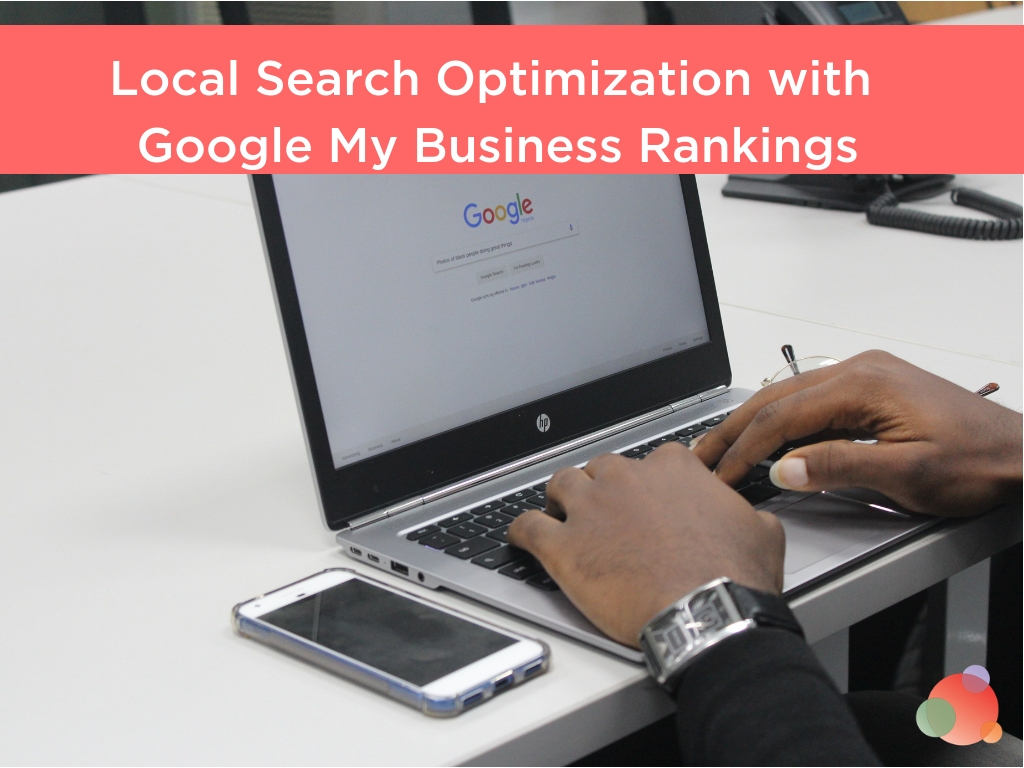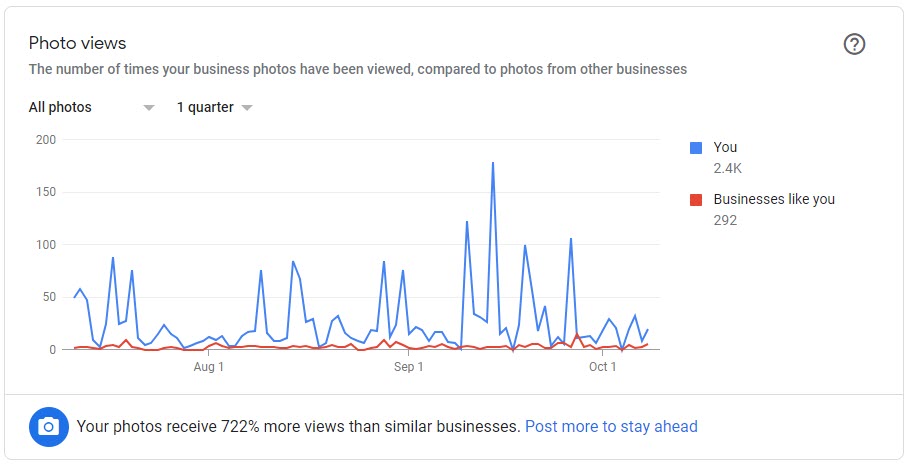 If you’re a business owner or local marketer, then you probably already know the crucial role your Google My Business (GMB) listing can play in your local search success.
If you’re a business owner or local marketer, then you probably already know the crucial role your Google My Business (GMB) listing can play in your local search success.
Obtaining the top three, local pack map results for a geo-location-specific search term can be the difference between local search marketing success or failure.
Somewhere between 55 and 60 percent of all search traffic goes to the top three results. And half of all people who make a local search will visit a resulting store within one day.
But how can you do it in a way that is both cost-effective and obtains lasting results?
In this article, you’ll learn the eight-step process which has stood the test of time.
Core SEO Marketing Principles
While the importance of each step can fluctuate, the core holistic SEO marketing principles should future-proof your results no matter what AI, voice search, and the like throw our way in the coming years.
And what are those core holistic SEO marketing principles, you ask?
- Write and produce exceptional content that informs, educates, and entertains your target audience.
- Publish it on your technically-excellent, fast-loading, mobile-friendly, secure, easy-to-navigate website.
- Get relevant third-party, quality websites to tell their audiences about it by linking to it in a natural way.
That’s easy, right? Well, not so fast. There’s a lot that goes into this. So let’s take it a step at a time.
Let’s review how you can future-proof your local search listings.
Optimize Your Local Search
While many factors can influence how many people find your listing, these are some of the most important ones:
- Register/Claim: It may seem obvious, but make sure you register your business with Google. And if you are registered but don’t have access, then follow these steps to make a claim.
- NAP: Ensure you provide the most accurate information about your business. Include your legal business name, address, and phone number (hence, NAP). And don’t try to keyword stuff your business name with your town/city/state as it will only result in a short-term gain with long-term pain (Example: if you try to KW stuff your business name in your listing, but don’t follow through with the same KW practices in your content, Google will catch on and remove you from those gamed results).
- Category: Put your business listing in the right category. You can claim up to five, so choose carefully. Make sure your first category is the most relevant and accurate. This is a great resource for finding matching category options. Alternatively, visit competitor listings on Google Maps, right-click to view the source code and locate the hidden categories they’ve registered for.
- Services: If this is an option in your vertical, be sure to list all the services you offer.
- Hours: List your opening hours.
- Website: List your full URL.
- Attributes: Not all verticals have this option available, but if you do, take advantage of it by choosing attributes that apply to your business.
- Description: Highlight main USPs in 750 characters or less. Do not keyword stuff as this has no influence on rankings. Instead, write a compelling elevator pitch that will compel users to visit your website or contact you.
- Images and Videos: Upload as many high-quality photos as possible. This is the place to sell the appeal of your business visually. Great images attract users, so upload fresh photos often. Despite competing with other agencies near us, our images received 722 percent more views than our competitors in the last quarter alone.

Source: Smoking Chili Media
- Customer Reviews: Request customer reviews whenever the opportunity arises. These can help improve sales and inquiry rates. Make your request easy for the customer by using this Google review link generator tool, giving customers a direct link to your personal business review page.
The Right Kind of Backlinks
Backlinks remain a huge ranking signal to Google. They are a marker of trust.
If the links to your site come from high authority sites, then Google’s trust in the information on your site goes up.
In turn, the keywords on those pages have a better chance of ranking high on Google.
And the trust in content placed in your GMB listing is also elevated.
So how do you build your domain authority and leverage it to give your GMB listing the best chance of appearing in Local Search Pack results?
There are two main link routes, vertical and geographical.
It’s essential to gain links from both the websites within your industry vertical as well as your geographic region. Both types are relevant, so go after them.
- Blogs: Respond to relevant journalist-source requests by signing up for JournoRequests and SourceBottle. These are a great way to get contextual links within articles from high authority sites you would otherwise struggle to appear in. And look into writing for relevant industry blogs that accept guest posts. Search for the topic + intitles: “contribute” or “write for us.”
- Contact non-competing local businesses: It’s always good to get other local business owners to link to your site. These can help further establish your relevance locally for local searches.
- Create newsworthy content: Contact local bloggers and newspapers to promote your event. Whether it’s a charity pancake flipping marathon or an eating contest, make it fun and get yourself in the local press.
- Forums or Directories: While these are not the best quality link, they are the quickest and easiest to obtain. So be selective, choose the most relevant options to your industry and location, and register for a few.
A word of caution, make sure to avoid link farms, and other nefarious link building tactics as Google will soon be on to you.
And this includes paying people to guest post for you on non-real human audience websites, i.e., those set up to pass link juice around but that no human actually reads.
Optimize Your Website
There are many tips to consider when optimizing your website, and these are some of the most important ones.
- Speed: Make sure your website is fast-loading, especially for mobile users. Use Google Lighthouse to find site speed optimization. Likely suspects for optimization include image compression, plugins like WP-Cache to cache web pages, employing a CDN, running the site on a dedicated server, and so on.
- Security: Buy an SSL certificate to ensure your site is publicly seen as https secure.
- User Experience (UX): Ensure your site is easy to navigate and has a well-planned, intuitive category structure.
- Crawlability: Make sure Google spiders can quickly figure out what each page of your site is about, 404 errors are quickly dealt with via 301 redirects, an XML sitemap is loaded in your Google Search Console, your robots.txt file clearly allows or blocks Google spider access to the pages you want, and so on.
- Mobile Friendly: It’s vitally important your site is mobile-friendly as Google now indexes the mobile version of your site first . Not being mobile-friendly can negatively affect your rankings.
Create Quality Content
“Content is king!” is such an overused expression in the SEO community.
And yet, it still rings true.
You need to build high-quality content which informs, entertains and educates.
In fact, you want your content to be so good that it acts as a true linkable asset during your outreach campaigns.
Or as James Carville might have said if he was working in SEO, “It’s the content stupid!”
Register with the Biggest Citation Sources
Google needs to be confident in knowing that what you say you do, and where you say you do it, are 100 percent accurate.
As such, they use citation sources as a means of verifying that your GMB listing is corroborated elsewhere on the internet.
And major citation sources are not the only places for you to consider when registering your business.
The following are some of the more important sites to start with:
- Bing Places
- Apple Maps
- Infogroup
- Acxiom
- Factual
- LocalEze
- Dunn & Bradstreet
- Yelp
- Yellowpages
Encourage Customer Reviews
Providing high-quality service is one way to encourage customers to leave positive reviews. Here are a few others:
- Email past customers and include your review link.
- Place a link to your Google ID link on your website and encourage customers to leave a review.
- When sending receipts in email form, include the link to your Google ID link.
- If you host an event, encourage attendees to leave a review on your Google listing.
- Add the text “Please leave a review on Google” on your business cards. along with your ID review link.
Always respond to customer reviews no matter if they are positive or negative.
Address the negative ones as a priority. It’s important for customers to see how you handle any criticism and what you take away from it.
Recently, a client of ours dealt with a bad review by asking how they could improve. This began a dialogue, with the customer revisiting the client, having a great experience, and revising their previous negative review.
That is what I call a successful review makeover.
Pay Close Attention to Customer Behavior
The most important customer behaviors to consider are click-through rate, bounce rate, brand searches, search origination, mobile users who click-to-call, people needing directions to your location, and check-ins.
There are two ways to improve your site and listing by paying attention to customer behavior metrics.
The first is to determine if changes in site content alter the click-through rate. Then apply this knowledge when creating new content. You can also track changes in time-on-page engagement.
The second is in determining if changes in your site content resulted in changes to the number of people clicking to call your company from a mobile device.
Personalize Your Listing
With the advent of smartphones, cookie tracking, geo-location tracking, voice search, and the like, Google has your profile, your preferences, and your behaviors.
User location comes into play with GMB when doing a search.
And by ensuring your GMB listing and site are fully optimized, and you have a decent backlink profile, it’ll give you a fighting chance at inclusion in local results.
Don’t Forget About Social Media
Nearly everyone uses a social media platform these days.
And with the amount of ad targeting options on Facebook alone, you can quickly build local, engaged audiences.
In turn, this helps drive new users to your site, build links, and send further behavior signals to Google.
After all, it’s a bit difficult to fake 1,000 independent mobile users converging on a site from Facebook in a couple of days.
If They Can Do it…So Can You!
This process path has led to some fantastic outcomes for my clients over the years.
From vastly increasing visitor numbers to extensive sales growth, we have seen success.
One of our clients, The Creaky Shed, a small fruit and vegetable store in London, managed to bag themselves an appearance in a nationwide American Express ad on the back of being found in a Google pack result.
So if a small business like theirs can do it, so can yours!
Photo by Benjamin Dada on Unsplash